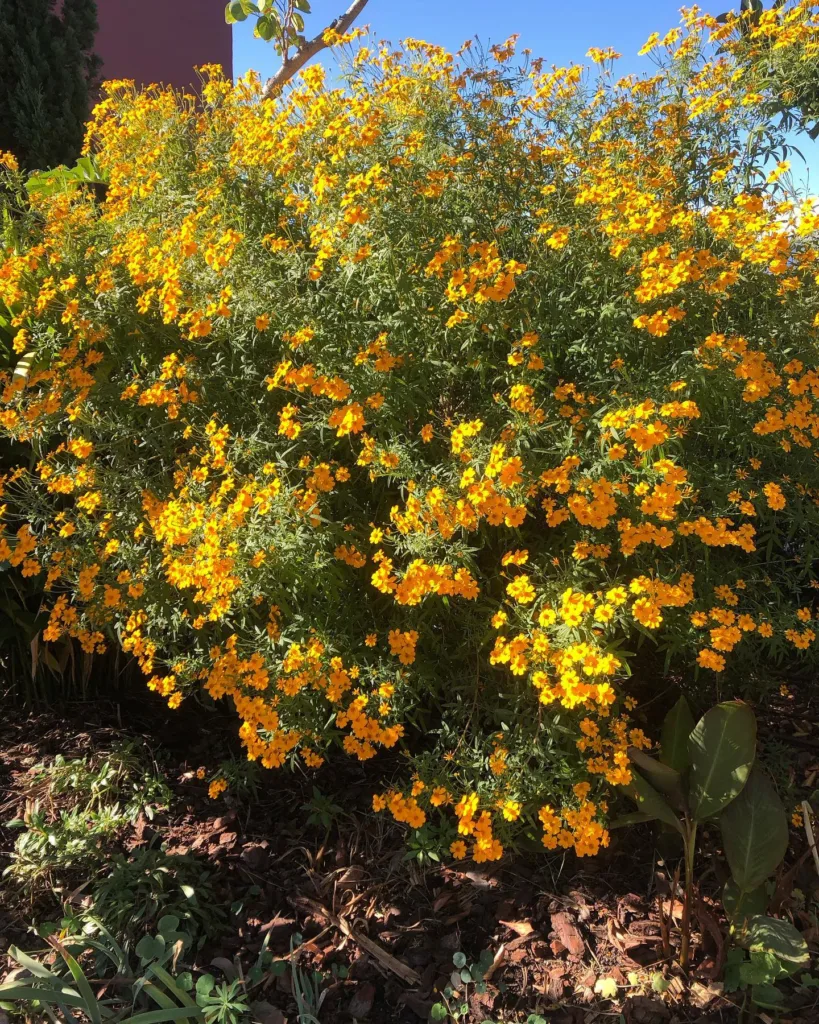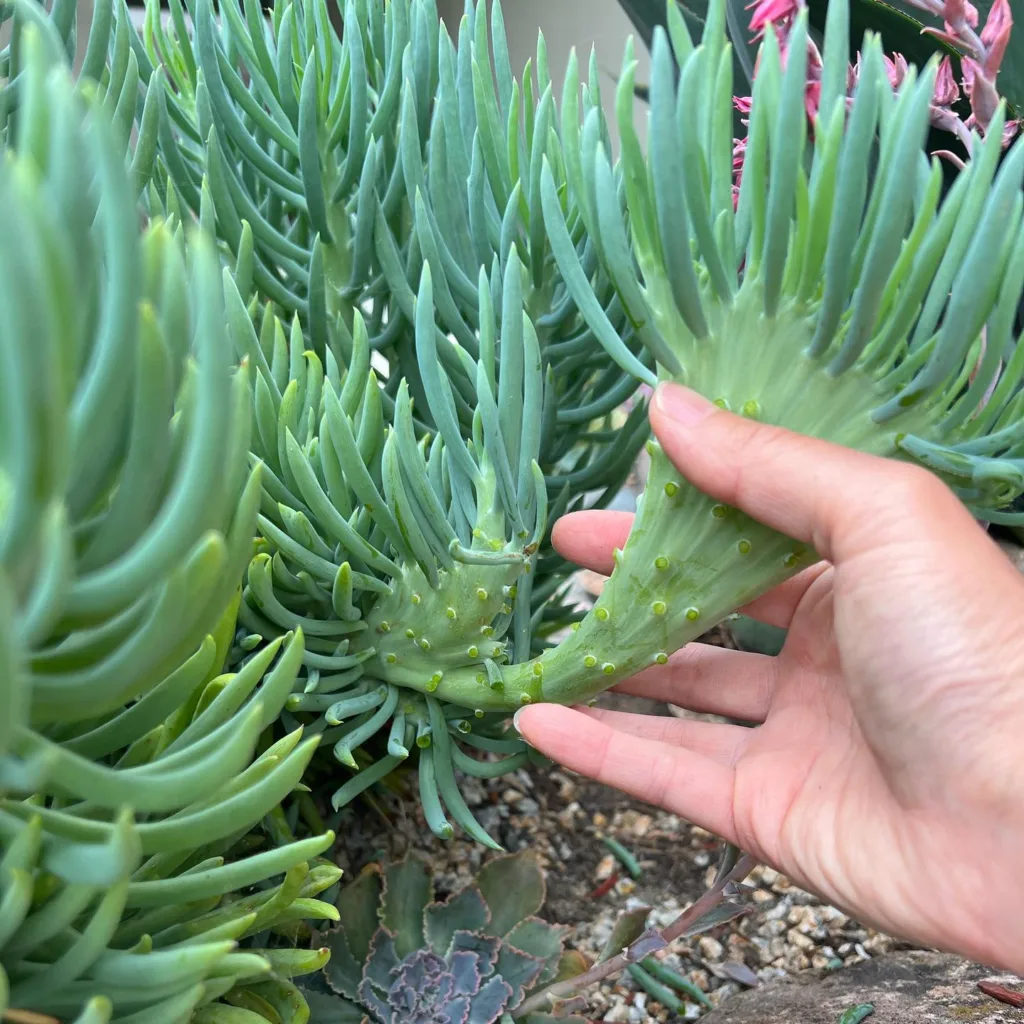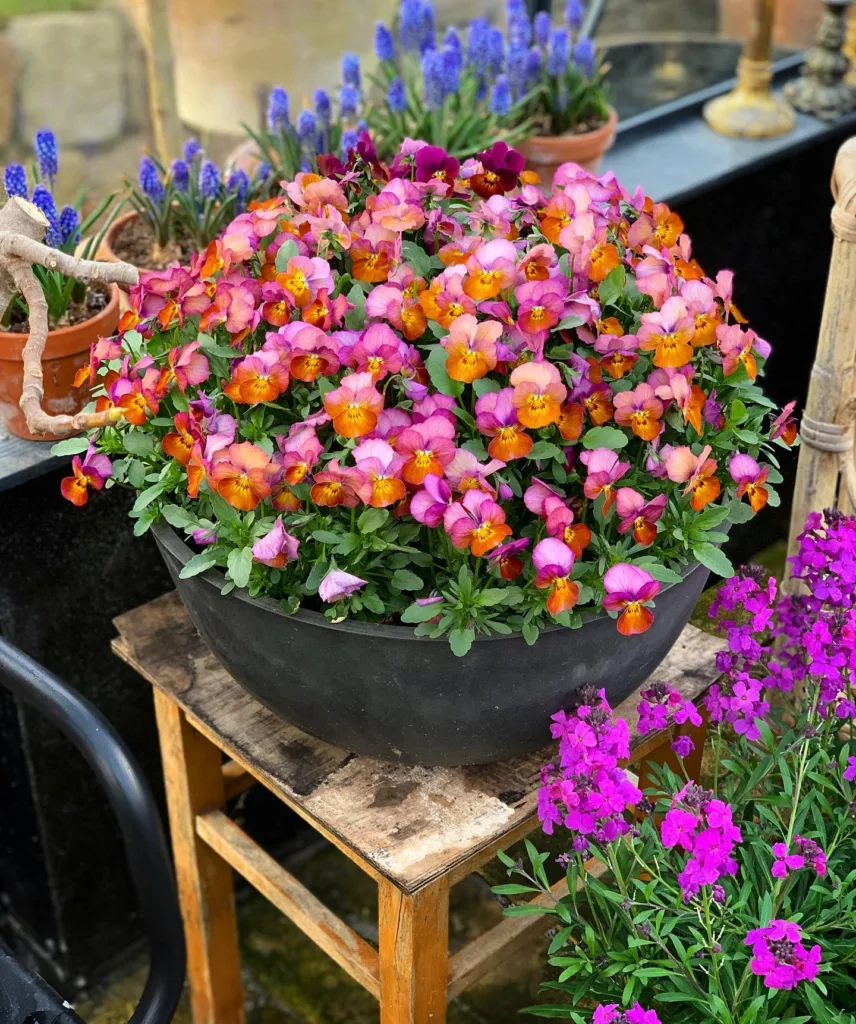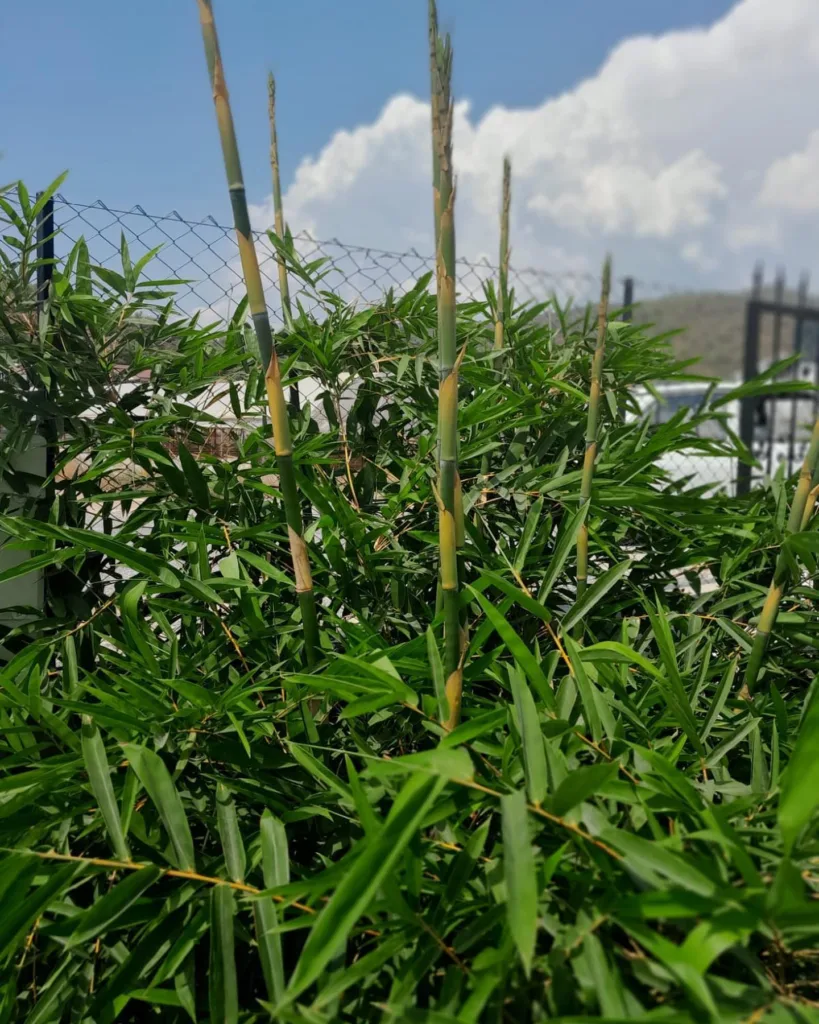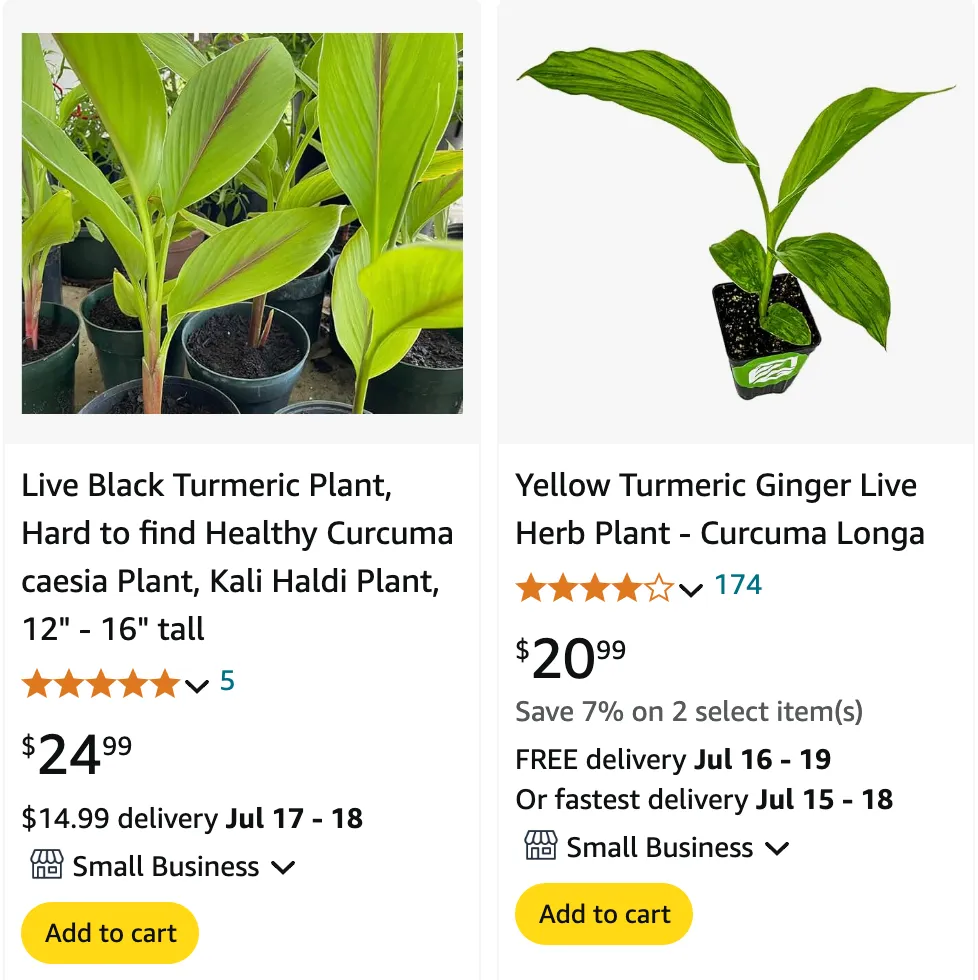
The Curious Case of Curcuma: A Guide from Ferb Vu
Curcuma has become a rising star in the world of wellness. This vibrant spice, with its earthy aroma and sunshine-yellow hue, has captured the attention of cooks and health enthusiasts alike. But for those new to curcuma, the questions can pile up faster than dirty dishes after a curry night. Fear not, fellow curious minds! I, Ferb Vu, am here to answer your burning questions about curcuma and turn you into a curcuma connoisseur.
What is Curcuma? Are Curcuma and Turmeric the Same?
Yes! Curcuma belong to the Zingiberaceae family, also known as turmeric, is a flowering plant native to Southeast Asia. The most prized part of the plant is the rhizome, an underground stem that boasts a vibrant orange color. This rhizome is dried and ground into the golden powder we know and love as turmeric. Curcuma is not only a culinary delight, but it also boasts a rich history in traditional medicine.
Curcuma species
- Curcuma achrae Saensouk & Boonma
- Curcuma aeruginosa Roxb.
- Curcuma albiflora Thwaites
- Curcuma alismatifolia Gagnep.
- Curcuma amada Roxb.
- Curcuma amarissima Roscoe
- Curcuma andersonii (Baker) Škorničk.
- Curcuma angustifolia Roxb.
- Curcuma antinaia Chaveer. & Tanee
- Curcuma arida Škorničk. & N.S.Lý
- Curcuma aromatica Salisb.
- Curcuma arracanensis W.J.Kress & V.Gowda
- Curcuma aruna Maknoi & Saensouk
- Curcuma attenuata Wall. ex Baker
- Curcuma aurantiaca Zijp
- Curcuma australasica Hook.f.
- Curcuma bakeriana Hemsl.
- Curcuma bella Maknoi, K.Larsen & Sirirugsa
- Curcuma bhatii (R.M.Sm.) Škorničk. & M.Sabu
- Curcuma bicolor Mood & K.Larsen
- Curcuma caesia Roxb.
- Curcuma campanulata (Kuntze) Škorničk.
- Curcuma candida (Wall.) Techapr. & Škorničk.
- Curcuma cannanorensis R.Ansari, V.J.Nair & N.C.Nair
- Curcuma caulina J.Graham
- Curcuma ceratotheca K.Schum.
- Curcuma chantaranothaii Boonma & Saensouk
- Curcuma charanii Boonma & Saensouk
- Curcuma cinnabarina Škorničk. & Soonthornk.
- Curcuma clovisii Škorničk.
- Curcuma cochinchinensis Gagnep.
- Curcuma codonantha Škorničk., M.Sabu & Prasanthk.
- Curcuma coerulea K.Schum.
- Curcuma colorata Valeton
- Curcuma comosa Roxb.
- Curcuma cordata Wall.
- Curcuma coriacea Mangaly & M.Sabu
- Curcuma corniculata Škorničk.
- Curcuma cotuana Luu, Škorničk. & H.Ð.Trần
- Curcuma decipiens Dalzell
- Curcuma eburnea Škorničk., Suksathan & Soonthornk.
- Curcuma ecomata Craib
- Curcuma elata Roxb.
- Curcuma euchroma Valeton
- Curcuma exigua N.Liu
- Curcuma ferruginea Roxb.
- Curcuma fimbriata Škorničk. & Soonthornk.
- Curcuma flammea Škorničk.
- Curcuma flaviflora S.Q.Tong
- Curcuma glans K.Larsen & Mood
- Curcuma glauca (Wall.) Škorničk.
- Curcuma globulifera Škorničk. & Soonthornk.
- Curcuma gracillima Gagnep.
- Curcuma graminifolia (K.Larsen & Jenjitt.) Škorničk.
- Curcuma grandiflora Wall. ex Baker
- Curcuma gulinqingensis N.H.Xia & Juan Chen
- Curcuma haritha Mangaly & M.Sabu
- Curcuma harmandii Gagnep.
- Curcuma heyneana Valeton & Zijp
- Curcuma ignea Ruchis. & Jenjitt.
- Curcuma inodora Blatt.
- Curcuma involucrata (King ex Baker) Škorničk.
- Curcuma karnatakensis Amalraj, Velay. & Mural.
- Curcuma kayahensis Nob.Tanaka & M.M.Aung
- Curcuma kudagensis Velay., V.S.Pillai & Amalraj
- Curcuma kwangsiensis S.G.Lee & C.F.Liang
- Curcuma lampangensis Saensouk, Maknoi & Rakarcha
- Curcuma larsenii Maknoi & Jenjitt.
- Curcuma latiflora Valeton
- Curcuma latifolia Roscoe
- Curcuma leonidii Škorničk. & Luu
- Curcuma leucorrhiza Roxb.
- Curcuma lindstromii Škorničk. & Soonthornk.
- Curcuma lithophila Škorničk. & Soonthornk.
- Curcuma loerzingii Valeton
- Curcuma longa L.
- Curcuma longispica Valeton
- Curcuma macrochlamys (Baker) Škorničk.
- Curcuma mangga Valeton & Zijp
- Curcuma maxwellii Škorničk. & Suksathan
- Curcuma meraukensis Valeton
- Curcuma micrantha Škorničk. & Soonthornk.
- Curcuma montana Roxb.
- Curcuma mukhraniae R.Kr.Singh & Arti Garg
- Curcuma mutabilis Škorničk., M.Sabu & Prasanthk.
- Curcuma myanmarensis (W.J.Kress) Škorničk.
- Curcuma nakhonphanomensis Boonma, Saensouk & P.Saensouk
- Curcuma nankunshanensis N.Liu, X.B.Ye & Juan Chen
- Curcuma neilgherrensis Wight
- Curcuma nepalensis M.Sabu, Kasaju & S.Subedi
- Curcuma newmanii Škorničk.
- Curcuma oligantha Trimen
- Curcuma ornata Wall. ex Baker
- Curcuma pambrosima Škorničk. & N.S.Lý
- Curcuma papilionacea Soonthornk., Ongsakul & Škorničk.
- Curcuma parviflora Wall.
- Curcuma parvula Gage
- Curcuma pedicellata (Chaveer. & Mokkamul) Škorničk.
- Curcuma peramoena Souvann. & Maknoi
- Curcuma petiolata Roxb.
- Curcuma phaeocaulis Valeton
- Curcuma phrayawan Boonma & Saensouk
- Curcuma picta Roxb. ex Škorničk.
- Curcuma pierreana Gagnep.
- Curcuma pitukii Maknoi, Saensouk, Rakarcha & Thammar.
- Curcuma plicata Wall. ex Baker
- Curcuma prakasha S.Tripathi
- Curcuma prasina Škorničk.
- Curcuma pseudomontana J.Graham
- Curcuma puangpeniae Boonma & Saensouk
- Curcuma pulcherrima Boonma, Saensouk & P.Saensouk
- Curcuma purpurascens Blume
- Curcuma purpurata Boonma & Saensouk
- Curcuma putii Maknoi & Jenjitt.
- Curcuma pygmaea Škorničk. & Šída f.
- Curcuma rangjued Saensouk & Boonma
- Curcuma rangsimae Boonma & Saensouk
- Curcuma reclinata Roxb.
- Curcuma rhabdota Sirirugsa & M.F.Newman
- Curcuma rhomba Mood & K.Larsen
- Curcuma roscoeana Wall.
- Curcuma rosea P.Saensouk, Saensouk & Boonma
- Curcuma roxburghii M.A.Rahman & Yusuf
- Curcuma rubescens Roxb.
- Curcuma rubroaurantiaca Škorničk. & Soonthornk.
- Curcuma rubrobracteata Škorničk., M.Sabu & Prasanthk.
- Curcuma rufostriata Škorničk. & Soonthornk.
- Curcuma ruiliensis N.H.Xia & Juan Chen
- Curcuma sabhasrii Saensouk, Maknoi, Wongnak & Rakarcha
- Curcuma sahuynhensis Škorničk. & N.S.Lý
- Curcuma saraburiensis Boonma & Saensouk
- Curcuma sattayasaiorum Chaveer. & Sudmoon
- Curcuma scaposa (Nimmo) Škorničk. & M.Sabu
- Curcuma sessilis Gage
- Curcuma siamensis Saensouk & Boonma
- Curcuma sichuanensis X.X.Chen
- Curcuma singularis Gagnep.
- Curcuma sixsensesensis D.D.Nguyen & T.A.Le
- Curcuma sparganiifolia Gagnep.
- Curcuma spathulata Škorničk. & Soonthornk.
- Curcuma stahlianthoides Škorničk. & Soonthornk.
- Curcuma stenochila Gagnep.
- Curcuma stolonifera Nob.Tanaka, K.Armstr. & M.M.Aung
- Curcuma strobilifera Wall. ex Baker
- Curcuma sumatrana Miq.
- Curcuma suphanensis P.Saensouk, Boonma, Rakarcha, Maknoi, Wongnak & Saensouk
- Curcuma supraneeana (W.J.Kress & K.Larsen) Škorničk.
- Curcuma suraponii Boonma
- Curcuma sylvatica Valeton
- Curcuma thorelii Gagnep.
- Curcuma tongii Y.H.Tan & Li X.Zhang
- Curcuma trichosantha Gagnep.
- Curcuma tuanii H.T.Nguyen, D.D.Nguyen & N.A.Nguyen
- Curcuma vamana M.Sabu & Mangaly
- Curcuma vinhlinhensis D.D.Nguyen & T.A.Le
- Curcuma viridiflora Roxb.
- Curcuma vitellina Škorničk. & H.Ð.Tran
- Curcuma wallichii M.A.Rahman & Yusuf
- Curcuma wanenlueanga Saensouk, Thomudtha & Boonma
- Curcuma wilcockii M.A.Rahman & Yusuf
- Curcuma woodii N.H.Xia & Juan Chen
- Curcuma xanthella Škorničk.
- Curcuma yingdeensis N.H.Xia & Juan Chen
- Curcuma yunnanensis N.Liu & S.J.Chen
- Curcuma zanthorrhiza Roxb.
- Curcuma zedoaria (Christm.) Roscoe
- Curcuma zedoarioides Chaveer. & Tanee
Where can I buy Curcuma Root?
Fresh curcuma root can be a bit trickier to find than its powdered counterpart. Look for it in Asian grocery stores or specialty markets. Whole Foods and some well-stocked supermarkets may also carry it. When choosing curcuma root, select firm, unblemished pieces with a smooth, vibrant orange skin.
How can I clean Curcuma Stains?
Curcuma’s vibrant color can be a blessing in the kitchen, but a curse on your clothes. Don’t despair! Here’s how to tackle those stubborn stains:
- Act fast! The sooner you treat the stain, the easier it will be to remove.
- Pre-treat with baking soda or laundry detergent. Make a paste with a little water and apply it to the stain. Let it sit for 30 minutes before rinsing.
- Wash in hot water. Most washing machines have a “sanitary” setting, which is ideal for curcuma stains.
- Repeat if necessary. Stubborn stains might require multiple treatments.
Where can I buy Curcuma Powder?
Curcuma powder is widely available in most grocery stores, typically found in the spice aisle. Look for reputable brands and opt for powders stored in airtight containers to maintain freshness.
Is Curcuma Ginger a Perennial?
While both curcuma and ginger are rhizomatous plants, curcuma is not typically considered a perennial in most climates. It thrives in warm, humid environments and may not survive harsh winters. However, in tropical and subtropical regions, curcuma can indeed return year after year.
How Do I Care for a Potted Curcuma Plant?
Curcuma thrives in bright, indirect sunlight with well-draining soil. Water regularly, allowing the top inch of soil to dry out between waterings. During the growing season, a balanced fertilizer diluted to half strength can be applied monthly. Keep an eye on temperatures, as curcuma prefers warmth and struggles in chilly environments.
How Do I Grow a Curcuma Ginger Plant?
There are two main ways to grow curcuma: from rhizomes or seeds.
- Rhizome method: Purchase healthy curcuma rhizomes and plant them in well-draining potting mix with the “eyes” (buds) facing upwards. Keep the soil moist but not soggy and provide warmth and bright, indirect sunlight.
- Seed method: Curcuma seeds can be a bit more challenging to find. If you can locate them, sow them in a shallow tray filled with moist seed starting mix. Keep them warm and humid until germination occurs.
How Do I Divide a Curcuma Plant?
When your curcuma plant becomes crowded, it can be divided and repotted to create new plants. Carefully dig up the entire plant and use a sharp knife to separate the rhizomes. Each division should have at least one “eye” and healthy roots. Repot the divisions in fresh potting mix and care for them as you would a mature curcuma plant.
Curcuma vs Curcumin
Curcumin is the main bioactive compound found in curcuma. It’s responsible for many of the health benefits associated with the spice. So, while curcuma is the plant itself, curcumin is one of the key components that gives it its power.
Beyond the Basics: Exploring Curcuma’s Cousins
Curcuma belongs to the Zingiberaceae family, which includes other familiar spices like ginger and galangal. While these plants share some similarities, they also have distinct characteristics.
- Curcuma vs Acafrao (açafrão): Acafrao is the Portuguese word for turmeric.
- Curcuma vs Azafrán (saffron): Saffron is a much rarer and more expensive spice derived from the Crocus sativus flower. While both curcuma and saffron boast health benefits, they have different flavor profiles and culinary uses.
- Curcuma vs Cumin: Cumin is a warm, earthy spice with a distinct aroma. Unlike curcuma, cumin comes from the seeds of the Cuminum cyminum plant.
- Curcuma vs Curry: Curry powder is a blend of spices that often includes curcuma, but it’s not the same thing. Curry powder can vary greatly depending on the recipe, but it typically includes a combination of spices like cumin, coriander, chili powder, and turmeric.
- Curcuma vs Ginger: Ginger is another rhizomatous plant in the Zingiberaceae family. It has a pungent, slightly sweet flavor that differs from curcuma’s earthy, peppery notes.
- Curcuma vs Jengibre: Jengibre is simply the Spanish word for ginger.
- Curcuma vs Palillo: Palillo is the Spanish word for toothpick. There is no direct culinary connection between curcuma and toothpicks.
- Curcuma vs Safran: Safran is another name for saffron, the expensive spice derived from saffron crocuses.
How to Use Curcuma in the Kitchen?
Curcuma’s vibrant color and earthy flavor make it a versatile ingredient in the kitchen. Here are some ideas to get you started:
- Curries: Curcuma is a key ingredient in many Indian curries, adding both color and depth of flavor.
- Rice dishes: Turmeric can add a touch of sunshine and subtle spice to rice dishes like pilaf or biryani.
- Vegetables: Roasted or sautéed vegetables benefit from a sprinkle of turmeric for a warm, earthy note.
- Eggs: Scrambled eggs or omelets take on a vibrant hue and a touch of peppery flavor with the addition of curcuma.
- Smoothies and lattes: Curcuma can add a vibrant color and a touch of spice to your favorite smoothies and lattes.
Important Note: While curcuma is generally safe for most people in culinary amounts, it can interact with certain medications. Always consult with your doctor before consuming large amounts of curcuma, especially if you are taking any medications.
Conclusion
Curcuma is a fascinating plant with a rich history and a multitude of uses. Whether you’re using it to add a pop of color to your dishes or exploring its potential health benefits, curcuma is sure to become a valuable addition to your culinary and wellness journey. So, the next time you encounter this golden wonder, remember the information you’ve gleaned here and embrace the curious case of curcuma!
If i die, water my plants!
